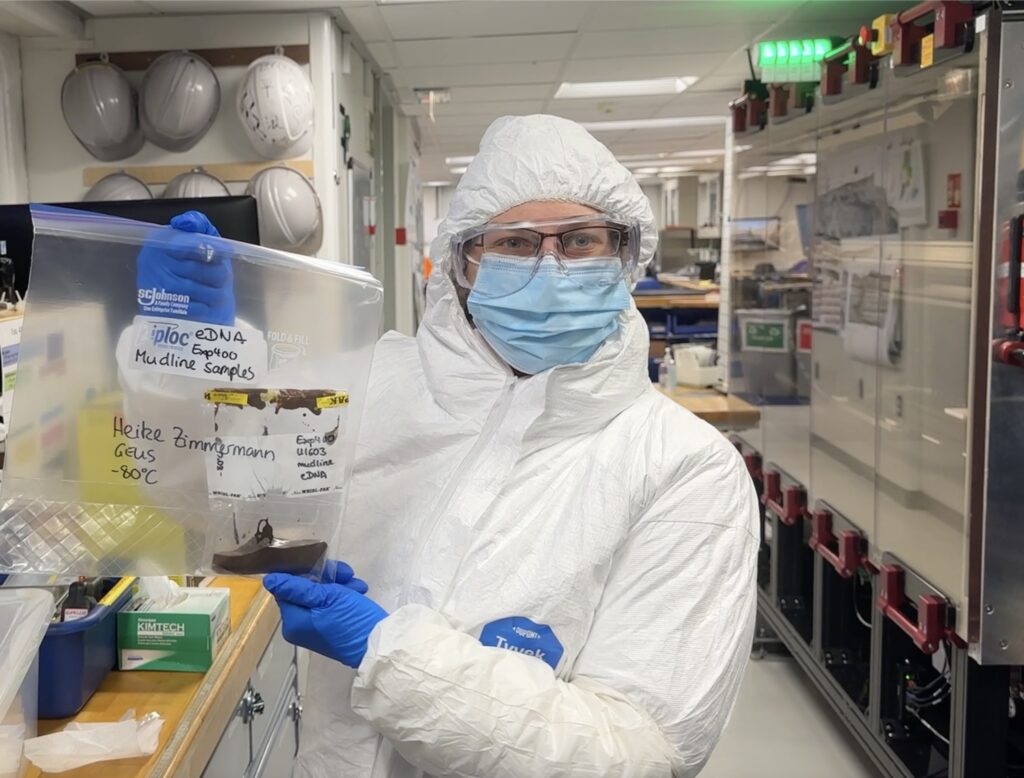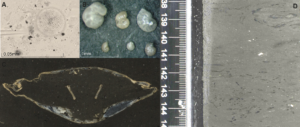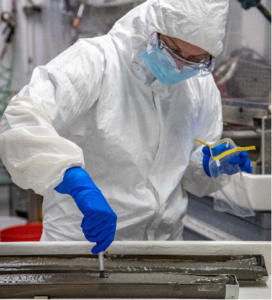
Heike Zimmermann: Expedition 400 Paleoecologist
While the JOIDES Resolution makes its way back to Reykjavík through some rocking seas, the ship’s scientists have a bit more time to reflect on their work. We chatted with Expedition 400 paleoecologist Dr. Heike Zimmermann of the Geological Survey of Denmark and Greenland. She discusses her research and how it ties in with the expedition science objectives.
What can we learn from ancient life in seafloor sediments?

Seafloor sediments are natural archives that can tell us how ecosystems have changed in the past. Our planet has experienced many cycles of warmer and colder phases and species have evolved, adapted, shifted where they live, or even died out as a consequence. Normally with lab experiments, we can only see a fraction of the complexity of species interactions and feedback mechanisms. But, with seafloor sediments, we can look at the past and use them like a big experiment!
Which tool do you use to get information about past ecosystems?
Many lifeforms with important roles in marine ecosystems are not typically preserved as fossils. Among those are important species of phyto- and zooplankton, jellyfish, worms, or fish. However, we can find molecular traces of these organisms, such as DNA. DNA can bind to sediment particles and get preserved over thousands to millions of years. We call this “sedimentary ancient DNA”.
What methods and tools do you use to collect and analyze DNA from seafloor sediment?
Once the DNA is extracted from the sediments, my colleagues and I will apply a variety of methods, one being metagenomic shotgun sequencing. From just a few grams of sediment, shotgun sequencing allows us to reconstruct marine communities from bacteria and the tiniest alga to marine mammals in a single reaction!
What is the most exciting part of your work on this expedition?
It’s like a treasure hunt!
We get the chance to unfold the environmental history of Northwest Greenland over the last few millions of years. These sediments are the oldest I have ever worked with! It’s spectacular to see sediments that have been buried so deep and that are usually beyond our reach with standard coring equipment. I am feeling very fortunate to work on such precious and unique material.

How do you “dress for the job” of collecting samples?
I “suit up” into a plastic coverall, I wear a face mask, a hairnet and gloves. Ancient DNA is very sensitive to contamination by modern DNA either from myself or from the surrounding environment. Normally, when DNA is contained within a living cell, any damage to it is instantly repaired. But after an organism dies, its DNA degrades into small fragments and gets increasingly damaged over time. The older the sample, the fewer and shorter DNA molecules we expect to find, and if I am not careful enough, my DNA could override the ancient signals we are looking for.
How does your research connect with the Expedition 400 science objectives?
I hope to improve our understanding of the interactions between climate, the ocean, and the biosphere in the Arctic. The samples I have taken contain valuable information about climate-ecosystem interactions and how marine ecosystems respond to the deglaciation of the Greenland Ice Sheet. My research addresses questions like: What might happen to primary productivity and the biological carbon pump if the ice sheet melts and releases its freshwater into the ocean? How might food webs change and what might be the effect on economically relevant fish stocks? Could Greenland be more susceptible to harmful algae blooms in the future?
Marine ecosystems are important resources to us humans and
I hope ancient DNA can improve our understanding of past, current, and future ocean conditions.